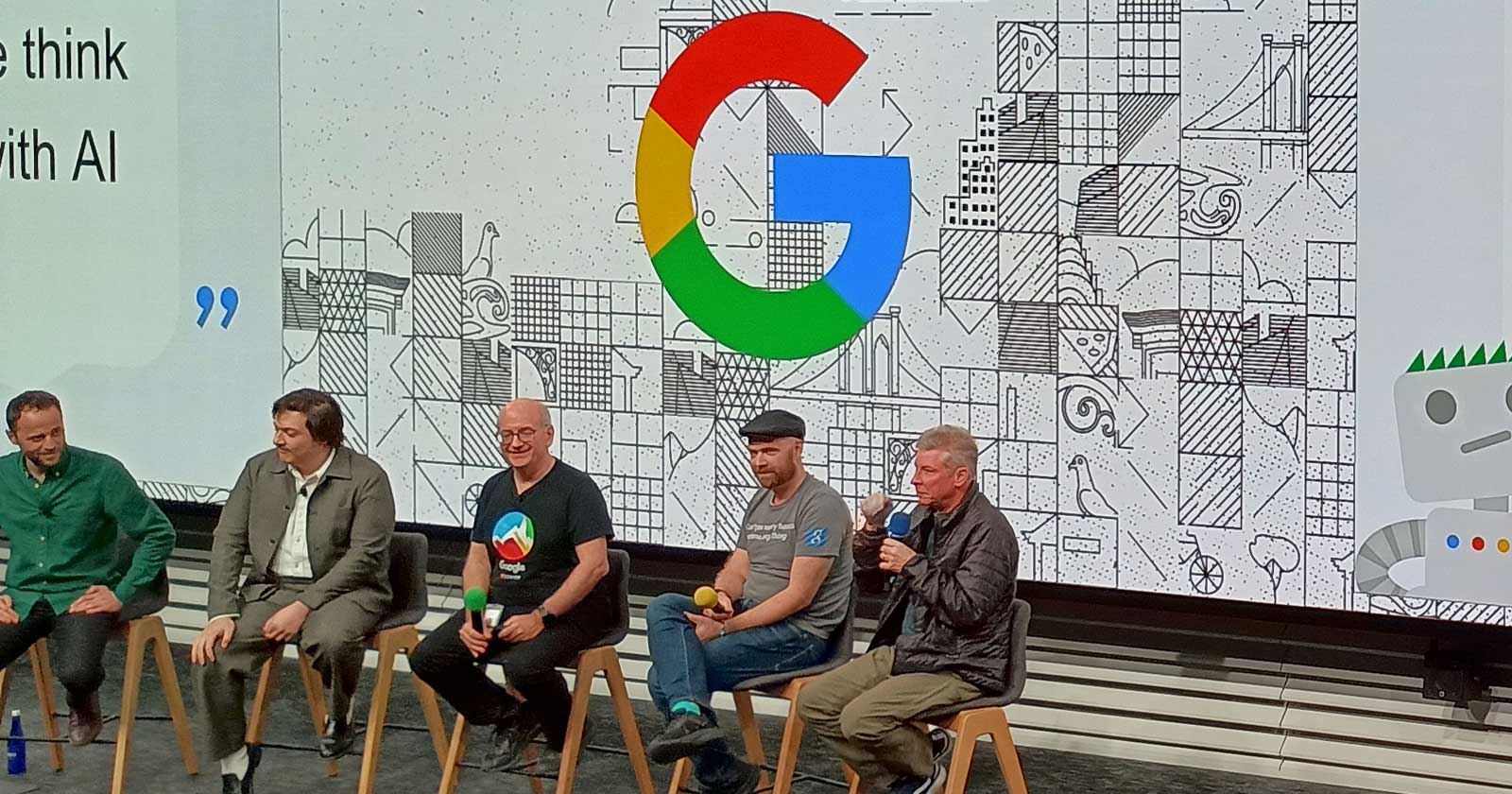Google’s Quality Rankings May Rely On These Content Signals via @sejournal, @martinibuster
Content that delivers a meaningful experience with these 7 factors is more likely to earn links, shares, and higher rankings. The post Google’s Quality Rankings May Rely On These Content Signals appeared first on Search Engine Journal.

The average SEO strategy begins and ends with keyword research, with keyword volume as the deciding factor in what topics will be written about. It’s an outdated approach that fails to resonate with users and no longer reflects how modern search engines evaluate content. Content that delivers a meaningful experience across the factors that matter most to users earns trust, signals quality, and attracts links, shares, and higher rankings.
Table of Contents
1. User Behavior Has Always Been A Part Of Search Ranking 2. Do Keywords Matter Anymore? 3. Write With The Purpose To Be Understood 4. Crafting Content Around the User Experience 5. Users Share Experiences, Not Links 6. Make Visitors Want To Return 7. Post-Transaction Experience 8. Takeaways: User Experience MarketingUser Behavior Has Always Been A Part Of Search Ranking
User signals play a central role in Google’s ranking algorithms and the recent antitrust lawsuit against Google revealed how important these are.
One of the exhibits in the recent DOJ antitrust trial against Google featured a confidential presentation called Ranking For Research where Google noted that user behavior signals are noisy and that it takes a lot of data in order to see the patterns.
They wrote (PDF):
“The association between observed user behavior and search result quality is tenuous. We need lots of traffic to draw conclusions, and individual examples are difficult to interpret.”
Another Google document stated that user interaction signals are important to search rankings (PDF):
“…not one system, but a great many within ranking are built on logs. This isn’t just traditional systems, like the one I showed you earlier, but also the most cutting-edge machine learning systems, many of which we’ve announced externally– RankBrain, RankEmbed, and DeepRank.”
Google has used many kinds of user behavior signals for ranking purposes:
The Google Navboost patent ranks pages based on user interaction signals. Google’s Trust Rank patent describes an algorithm that relies on user trust signals to identify trustworthy sites and then identifies sites that are linked from those user-trusted websites. Google’s Branded Search patent describes an algorithm that uses navigational queries as implied links for ranking purposes.PageRank is commonly thought of as just a link algorithm but it’s actually a way to leverage user signals in the form of the links they publish on websites. It’s also a model of user behavior because the linked nature of the web can be used to indicate which sites a user is likely to visit.
Google’s PageRank research paper explains:
“PageRank can be thought of as a model of user behavior.”
Do Keywords Matter Anymore?
Yes, keyword still matter. But it’s been a long time since exact match keywords were a major factor that determined which sites are ranked. Look at virtually any search result and you’ll see that many top ranked sites do not contain an exact match for the keywords in a search query.
Content strategies that rely on keyword-based hubs or silos should be given a second look. Those kinds of strategies originated in the earliest days of search engines when adding exact match keywords into titles and headings was a sure way to be ranked. That’s no longer the case, so why are SEOs still stuck with keyword-based strategies that map keywords to a hub and spoke content strategy.
Logical site structure is a part of a quality user interface and makes it easy to find content. Focus on that and interlink in ways that make sense to users.
Try thinking in terms of topics that users are interested in and see how far that takes you.
Write With The Purpose To Be Understood
I’m going to share an advanced concept about writing that helps sentences, paragraphs and entire web pages reach an audience more effectively.
Cognitive Load
There is a scientific concept called cognitive load. In the context of reading, cognitive load is the amount of mental effort used to process information.
For example, sentences with confusing instructions or jargon can take extra effort to process. When the load exceeds a certain threshold, the person’s ability to understand or learn from what they’re reading suffers.
Cognitive Dissonance
I have my own theory that’s similar to cognitive load that I call cognitive dissonance. It’s not something scientific that I read, it’s just my own theory.
Dissonance means a lack of harmony, when sounds clash. Poor writing can be dissonant due to the choice of words that are abstract (lack a clear meaning or have multiple meanings) , using jargon, or simply using words that aren’t commonly understood.
Another source of dissonance is writing a paragraph that rambles rather than builds up to an idea.
Cognitive dissonance causes a reader to lose track of what they’re reading and consequently engage less with the content.
Here’s the same sequence of paragraphs you just read, with an explanation of their purpose:
1. Define the idea: I explain that I have a personal theory
I have my own theory that’s similar to cognitive load that I call cognitive dissonance. It’s not something scientific that I read, it’s just my own theory.
2. Explain my idea with a definition and metaphors
Dissonance means a lack of harmony, when sounds clash…
3. Apply the metaphor to writing:
Poor writing can be dissonant due to the choice of words…
4. Expand the definition to paragraph structure
Another source of dissonance is writing a paragraph that rambles rather than builds up to an idea.
5. The big idea I was building up to: What it all means
Cognitive dissonance causes a reader to lose track of what they’re reading and consequently engage less with the content.
SEOs like to talk about hooks and other little tricks to writing, but good writing is not about tricking the user. It’s about clear communication. It doesn’t always come out right the first time the words spill onto the page. Sometimes it helps to step away and come back to it for the errors in sentence and paragraph structure to become visible.
Crafting Content Around the User Experience
Publishers who build sites around keywords face an uphill struggle obtaining links, and since links remain an important ranking factor, it makes sense that the SEO strategy works together with obtaining links. This is where user experience marketing shines.
Nobody links to a keyword-based site because the keywords make them feel good about the site. Keyword-based sites feel sterile because they are optimized for keywords, not people. That approach also results in a made-for-search-engine website structure. Nothing screams “made for search engines” like sitewide title tags with keywords ripped from Google’s People Also Asked keyword lists.
What I would suggest is to acquaint yourself with who you’re writing for by speaking to people who are interested in your topic, joining some Facebook groups, checking out popular forums, listening to podcasts about the topic, watching YouTube videos about your topic, and reading the comment sections of those videos. This will not only give you an idea of what people are talking about, it will show you how they’re talking about it and quite possibly give you ideas for your business, whether that’s selling things online or writing about a topic
Perhaps the best kind of link is the kind created because of a positive experience (learning, usefulness, fun). Scientific research has discovered that experiences motivate sharing and that positive experiences are shared the most.
Insight: Those aren’t just links that people are sharing. Links from one website to another website or even on social media, are the expression of the experiences people had with a website. Cultivate positive experiences and people will begin linking and sharing your website.
Insight: Devoting time to the user experience is a pragmatic approach to promoting a website because inspiring site visitors with emotional resonance, a feeling, is a sure way to encourage more sales, more links, and more traffic. And that’s why we optimize, right? To make more money.
Make Visitors Want To Return
Make your content (even if they’re products) easily viewable from the top of the fold Make your content easy to scan (with headings) Offer related articles at key points where visitors tend to become disinterested Encourage messaging opt-insPost-Transaction Experience
Successful entrepreneur Justin Sanger pointed out that everyone knows about the sales funnel, but less well known is the funnel that opens up after the sale. He calls this upside-down funnel the Post-Transaction Funnel. The Post-Transaction Funnel represents all the things you can do to send a signal back to the search engines that site visitors had a good experience at your website. This activity includes:
Encouraging social sharing Cultivating good reviews Encouraging word of mouth referrals Cultivating relationships with non-competitors in your spaceI believe it is a good practice to consider the post-transaction funnel because those are the kinds of activities that tend to cultivate more sales. Post-transaction marketing is something to consider outside of the Classic SEO box.
Watch Justin Sanger Discuss Post-Transaction Funnel
Takeaways: User Experience Marketing
1. User-behavior signals are used within Google’s various algorithms and machine learning systems as evidence of page quality and trust.
2. Logically considered, visitor-friendly sentence, paragraph, page, and site architecture that makes it easy to understand information supports strong quality signals.
3. Content that uses clear, jargon-free sentences and paragraphs that build logically enables readers to process information effortlessly and helps build a better user experience.
4. Content planned around user experience rather than exact-match keywords makes pages feel more human-centered and less like they were made for search engines, which contributes to greater trust.
5. Positive emotional experiences that motivate natural sharing and backlinks act as strong indicators of authority and trust.
6. Page design that includes above-the-fold visibility, scannable headings, related-article prompts, and opt-ins helps keep visitors engaged, active, and returning, reinforcing external content quality signals.
7. Post-transaction funnel actions, such as encouraging reviews, social sharing, and word-of-mouth referrals, feed satisfaction signals back to search engines and strengthen trustworthiness.
It is important to recognize that the foundation of a successful website is the user experience. Even a successful PPC landing page is crafted with the principle of a quality end-to-end user experience, from the layout and ease of data delivery to convenience.
User experience marketing is about moving beyond simple keyword phrase optimization, with a content strategy built on understanding what that content means to the user. Is it important? Is it entertaining? Does it rock, and does it roll?
Relevance is still king, but the definition of relevance is now focused on the user, not your keywords.
Featured Image by Shutterstock/Andrii Nekrasov

 Koichiko
Koichiko 































